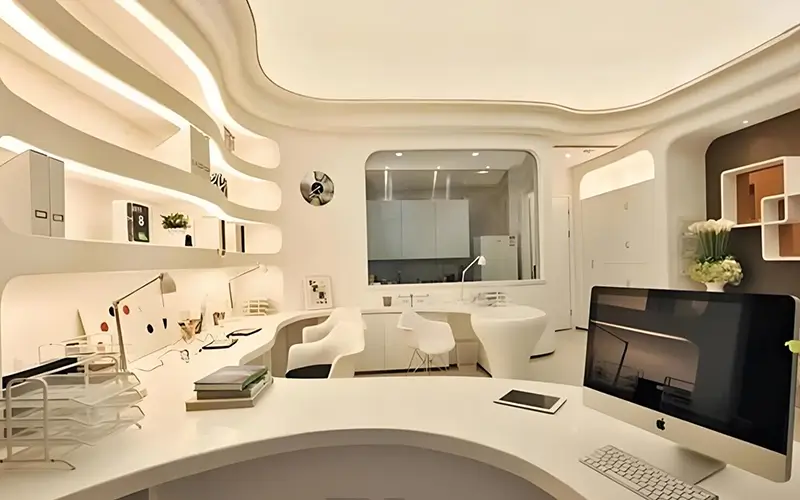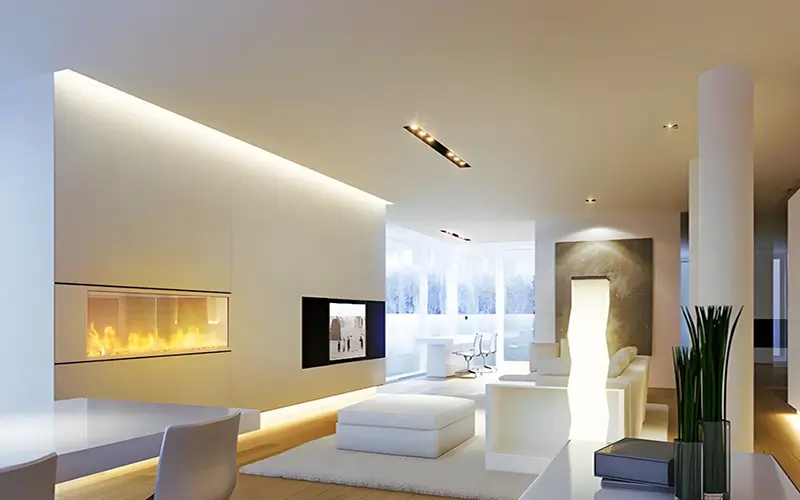
LED light strips have long been a popular choice for decorative and functional lighting applications both indoors and outdoors. However, we often wonder, “Do LED Strip Lights Use A Lot of Electricity?” It’s a good question indeed. In this article, we’ll explore the power consumption of LED light strips, their energy efficiency, whether LED light strips are energy efficient, and tips for reducing your electricity usage.
Introduction to LED Strips
LED strips are a type of LED light and are very popular with lighting designers. They are made up of tiny light-emitting diodes (LEDs) mounted on a flexible circuit board. The most prominent feature of LED strips is that they come in a variety of lengths, colors, and densities, making them suitable for a variety of lighting applications.
They are widely used for accent lighting, indoor lighting, architectural lighting, and decorative purposes. Their colorful colors, flexibility, and easy installation make them a favourite among DIY enthusiasts and professionals. For more information, pls read Can LED Light Strips Be Left on All Night?
Understanding Power Consumption
The power consumption of LED strips is usually expressed in watts per meter (W/m). The power consumption is determined by the number of LEDs and the wattage of each LED. Therefore, each type of LED strip has a different power consumption, which varies depending on the design and function of the strip.
LED Strip Power Consumption
LED strips are indeed known for their low power consumption compared to other traditional lighting. But different LED strips consume different amounts of power per meter.
For example, a standard LED strip we chose might use 5 to 24 watts per meter, depending on the density and brightness of the LEDs. In comparison, an incandescent lamp might use 60 watts or more per bulb, which is much higher.
If a 5-meter LED strip is rated at 10 watts per meter and runs for 10 hours per day, the power consumption is: 5 meters x 10 watts per meter x 10 hours = 500 watt-hours or 0.5 kWh/day
The power consumption for a month is: 0.5 kWh/day x 30 days = 15 kWh
So, this number is relatively low for LED strips compared to other household appliances and traditional lighting.
What Factors Affect the Power Consumption of LED Strips?
Different LED strips have different wattages, so what factors directly affect the power consumption of LED strips?

LED Strip Density
The density of the LEDs and the length of the LED strip are direct factors that affect power. Strips with more LEDs per meter will naturally consume more power because there are more light sources.
Strip Length
The longer the LED strip, the higher the total power consumption will certainly be. A 10-meter strip with 5 watts per meter will consume twice as much power as a 5-meter strip of the same density.
Voltage and Wattage
LED strips come in different voltage ratings, and our LED strips generally run at low voltages. For example, 12V or 24V. In some applications, higher voltage strips are more efficient. The wattage per meter rating also plays a role in determining the total power consumption.
Brightness and Color
In addition, if you want a brighter LED strip lights, it will consume more electricity. For example, now we have launched a high-efficiency LED neon flex very popular.
Tips to Reduce Power Consumption of LED Strips
- Choose the Right LED Strips
When choosing your lighting, you can choose strips with the right LED density for your needs. Don’t go for a high-density strip if a lower-density strip may be sufficient for your lighting needs. - Use dimmers and controllers
When you need mood lighting, you can use the dimming function of LED light strips to adjust the brightness according to your needs. This can reduce power consumption when full brightness is not needed. - Install motion sensors or timers
Motion sensors are very useful in some places. Using motion sensors or timers can ensure that LED strips are turned on only when needed, which can reduce unnecessary energy consumption. - Match Strip Length
When calculating the project of lighting, you need to choose the length of the strip that closely matches the required application to avoid using too much wattage. - Buying efficient light strips
It would be best if you prioritised using SMD LED or COB LED light strips, which are advertised as energy-saving light strips. Now COB LED light strips are mainly characterized by no light spots and several power options.
Conclusion
All in all, LED strip lights do not consume much electricity compared to traditional lighting options. Their low power consumption, long lifespan, and dimming capabilities make them a cost-effective and environmentally friendly choice compared to traditional lighting options. So you can rest assured to choose LED light strips for your project. We are a high-quality LED light strip supplier, please contact us if you have any needs.
